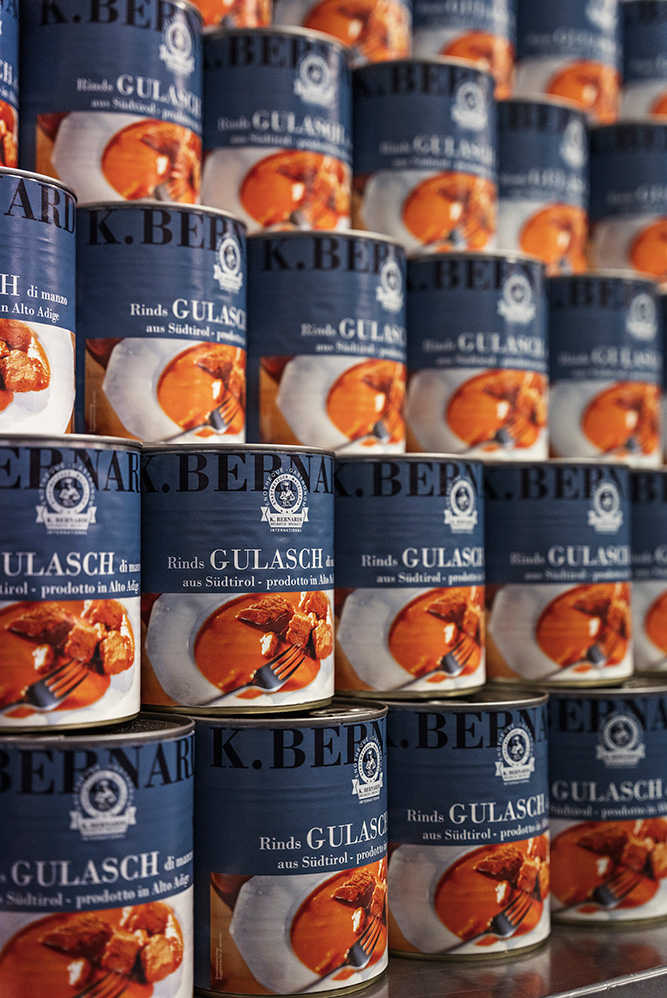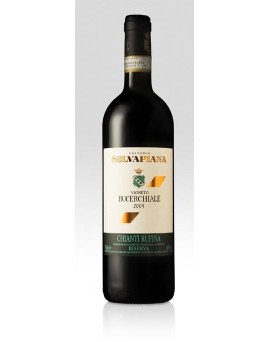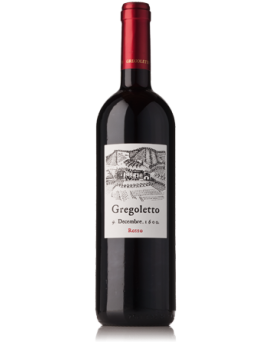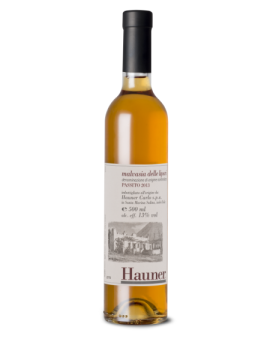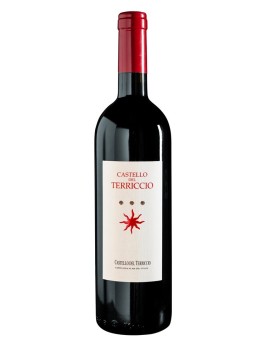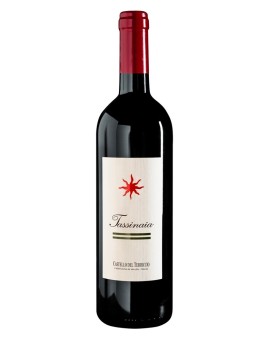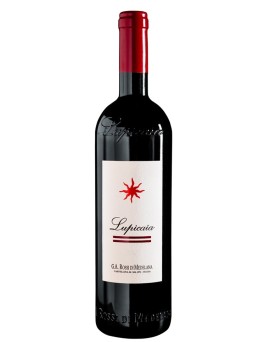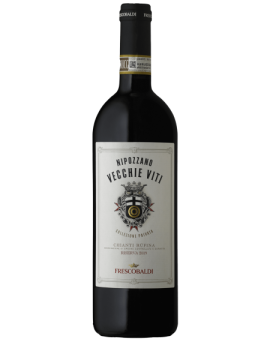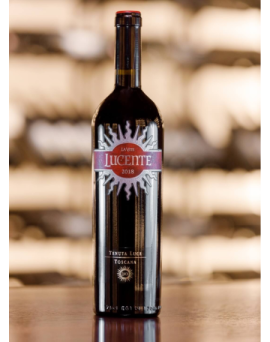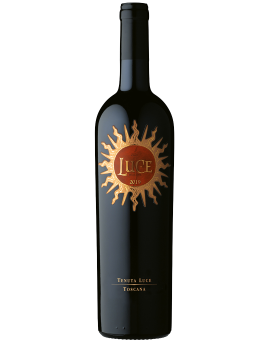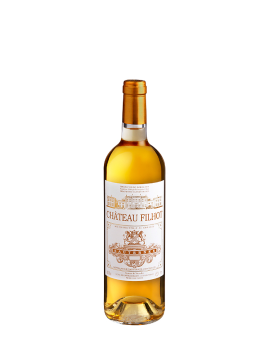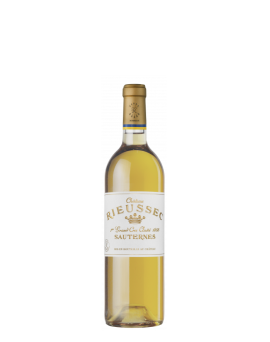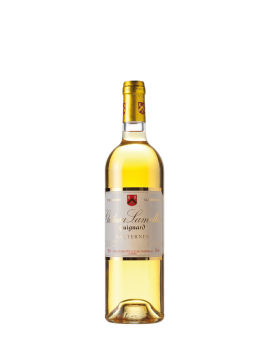Basket
0
Colli di Conegliano rosso...
GREGOLETTO<br />GREGOLETTO ROSSO DEI COLLI DI CONEGLIANO DOCG<br /><br />It has an intense ruby red colour with garnet reflections.<br />Fruity notes prevail in the bouquet, especially of red fruits, vanilla with hints of spices; in the mouth it is dry and harmonious, constantly tannic and ends with a pleasantly<br />bitterish aftertaste.<br /><br />Grapes: from the hills of San Pietro di Feletto.<br /><br />Grape varieties: Merlot 50%<br />Marzemino 10%<br />Cabernet Franc and Sauvignon 40 %.<br /><br />Average data: Alcohol 13% vol.<br /><br />Yield: 90 q/ha<br /><br />Acidity: 5.0 g/l<br />Suggestions: Serve at a temperature of 18°C<br />Goes well: with tasty meats and cheeses.<br /><br />Vinification: long maceration and maturation in large and small barrels for up to 6 months before sale (bottle ageing).<br />
Price
€30.70
Malvasia Lipari DOC Passito...
Malvasia delle Lipari<br />DOC passito<br /><br />THE COMPANY<br />A passion for oenology and for Malvasiadelle Lipari as the ultimate challenge of an intense life studded with interests. This was the spirit with which Carlo Hauner embarked<br />on his adventure in the Aeolian Islands in 1963; from painter to internationally renowned designer, he started wine production after restoring ancient terracing on the island of<br />Salina. His small revolutions in the cellar fascinated experts, starting with Veronelli, and brought Hauner's Malvasia to the tables of prestigious restaurants, in Italy, France,<br />the United States, Great Britain and Japan. In the 1980s, with the construction of a modern cellar, production was expanded, and alongside the Malvasia, Salina Bianco,<br />Salina Rosso and Antonello were born, a product of great lineage aged in barriques. aged in barriques. Since 1996, it is the son Carlo Junior together with his sons Andrea<br />and Michele who run the company and produce two versions of Malvasia delle Lipari: natural and raisin.<br /><br />CHARACTERISTICS<br />VINE: Malvasia delle Lipari 95%, Corinto Nero 5%.<br />CULTIVATION : espalier<br />HARVEST : late and withering on 'Cannizzi' for 15/20 days<br />VINIFICATION : skin contact and vinification at controlled temperature<br />MATURATION : Temperature-controlled tanks<br />AGING : 6 months in bottle<br />TASTING NOTES<br />Amber colour with vivid highlights, bright and transparent, excellent consistency.<br />Rich nose with fruity hints of dried figs, dates, ripe apricots, honey and sweet spices.<br />sweet. Mouth marked by a velvety softness, sweet but not cloying, supported by great flavour. supported by great tastiness.<br />
Price
€38.90
Castello del Terriccio 2016...
CASTELLO DEL TERRICCIO 2016<br /><br />Denomination: I.G.T. Rosso Toscana (Castello del Terriccio)<br />Producer: Castello del Terriccio<br />First vintage: 2000<br />Grapes: Syrah, Petit Verdot<br />Analytical Data: 14% Vol.<br />Soil type: The soils are rich in iron minerals with the presence of stones and fossils. The perfect slope towards the Mediterranean sea, a unique reflection of the sun, a<br />gentle coastal breeze and plenty of sunlight promote a unique and exclusive ripening.<br /><br />Training system: Spurred Cordon<br />Planting density: 3,600 vines/Ha. for old vineyards; 5,600 vines/Ha. for new vineyards<br />Climatic trend: 2016 was certainly one of the most regular vintages of the last decade. Rainfall met the vines' needs punctually: abundant in March, regular in May and June,<br />important at the end of July and, finally, a warm and sunny August and mid-September. Temperatures were optimal: a mild end to the winter that had caused concern was<br />then regularised by a tenably cool spring that slowed down the development of the bunches, which then benefited from the hot but not torrid summer, with significant<br />temperature swings. Cluster growth was regular and optimal, production was good and ripening was perfect.<br /><br />Harvest period: Harvesting was strictly by hand and took place for the Syrah and Petit Verdot grapes from mid-September. After an initial selection in the vineyard when<br />harvested by hand, the grapes are carefully selected a second time on arrival at the winery on the sorting table.<br /><br />Winemaking notes: After manual selection on the sorting table, the grapes are gently destemmed and pressed, taking care not to break the skin of the berries. Alcoholic<br />fermentation takes place in stainless steel open-cap fermenters at a controlled temperature, with maceration of the grapes, for about 20 days. Daily dèlestages allowed the<br />extraction of the aromatic bouquet and the right balance<br />tannicity, with important structure that will allow long ageing.<br /><br />Ageing: The wine is aged in first and second passage French oak Tonneaux for a period of about 22 months and then blended and bottled.<br />
Price
€80.00
Tassinaia 2017 Castello del...
TASSINAIA 2017<br /><br />Denomination: I.G.T. Rosso Toscana (Tassinaia)<br />Producer: Castello del Terriccio<br />First vintage: 1992<br />Grapes: Cabernet Sauvignon, Merlot<br />Analytical data: Alcohol degree: 14.50%.<br />Soil type: The soils where the vineyards are located are characterised by various and composite morphologies with a strong presence of stones and fossils; the altitude is<br />between 100 and 300 metres above sea level, with south/south-west exposure.<br /><br />Training system: spurred cordon<br />Planting density: 5,600 vines/Ha. for old vineyards; 6,250 vines/Ha. for new vineyards<br /><br />Climatic trend: Autumn began with rain and temperatures above the seasonal norm, while December and January were very cold months with freezing day and night<br />temperatures accentuated by tramontana winds and a lack of rain. Spring was characterised by dry weather. Summer arrived as early as mid-May with temperatures above<br />the seasonal average, as did the summer months. The veraison began in mid-July and the climatic trend brought forward<br />the ripening times of the grapes. Harvesting began early (at the end of August for the Merlot grapes) and continued for the Cabernet Sauvignon grapes until the end of<br />September. Healthy, crisp and well ripened grapes resulted in musts that were not overly structured, characterised by good acidity and a higher alcohol content than in other<br />vintages. higher than in other vintages.<br /><br />Harvest period: The harvest began at the end of August and was characterised by characterised by healthy grapes and perfect veraison.<br /><br />Vinification notes: Extremely soft pressing and destemming. Fermentation in steel vats at a controlled temperature, with maceration of the grapes for about 9-12 days for the<br />Merlot and 12-15 days for the Cabernet. During fermentation subsequent pumping over and délestages.<br /><br />Ageing: Ageing takes place in separate masses for each variety, in French oak tonneaux of second and third passage for 16 months. After being blended and bottled it rests<br />a further 12 months in bottle before being marketed.<br />
Price
€32.20
Lupicaia 2016 Castello del...
LUPICAIA 2016<br /><br />Denomination: I.G.T. Rosso Toscana (Lupicaia)<br />Producer: Gian Annibale Rossi di Medelana,Vittorio Piozzo di<br />Rosignano Rossi di Medelana<br />First vintage: 1993<br />Grapes: Cabernet Sauvignon, Petit Verdot<br />Analytical data: Alcohol degree: 14.50%.<br />Soil type: The soils are rich in iron minerals with the presence of stones and fossils. Facing the Mediterranean Sea, they benefit from a unique reflection of the sun, a<br />moderate breeze from the coast and the abundance of sunlight promotes unique ripening.<br /><br />Training system: Spurred Cordon<br />Planting density: 3,600 vines/Ha for old vineyards; 5,600 vines/Ha for new vineyards<br /><br />Climatic trend: 2016 was certainly one of the most regular vintages of the last decade. Rainfall met the vines' needs punctually: abundant in March, regular in May and June,<br />important at the end of July and, finally, a warm and sunny August and mid-September. Temperatures were optimal: a mild end to the winter that had caused concern was<br />then regularised by a tenably cool spring that slowed down the development of the bunches, which then benefited from the hot but not torrid summer, with significant<br />temperature swings. Cluster growth was regular and optimal, production was good and ripening was perfect.<br /><br />Harvest period: Harvesting was strictly by hand and took place for the Petit Verdot and Cabernet Sauvignon grapes from mid-September. After an initial selection in the<br />vineyard at the time of manual harvesting, the Lupicaia grapes are carefully selected a second time on arrival at the winery on the sorting table.<br /><br />Winemaking notes: After manual selection on the sorting table, the grapes are gently destemmed and pressed, taking care not to break the skin of the berries. Meticulous<br />alcoholic fermentation takes place in our stainless steel open-cap fermenters at a controlled temperature with maceration of the grapes for about 20 days. Daily dèlestages<br />allowed the perfect extraction of the bouquet<br />aromas and the right tannic balance, with an important structure that will allow for long ageing.<br /><br />Ageing: Ageing takes place in new French oak tonneaux for a period of about 22 months followed by further ageing in bottles before release.<br />
Price
€153.80
Vecchie Viti NIPOZZANO 2019...
Castello Nipozzano<br />Nipozzano Vecchie Viti 2019<br /><br />Chianti Rufina Riserva DOCG<br /><br />This wine, chosen by the Frescobaldi family to continue the tradition of reserving a Private Collection for its newborns, originates from the oldest vines of Castello Nipozzano,<br />endowed with a deep root system. Of great complexity and harmony, it is aged for 24 months in oak barrels in the ancient Tuscan tradition.<br /><br />Climatic trend: at Castello Nipozzano, winter 2019 was characterised by long periods of sunshine with low temperatures. Spring, on the other hand, was cool; the rains that<br />fell ensured good water reserves to face the hot summer days. The summer period was characterised by temperature fluctuations that helped to provide coolness during the<br />night, with the usual breezes from the slopes of the Apennines contributing in particular. The grapes were therefore accompanied to maturity by a combination of the warmth<br />of the sun and refreshing breezes; the bunches arrived at the harvest in perfect condition and the production expressed itself with wines typical of the area, marked by a<br />good<br />acid vein and silky tannins.<br /><br />Technical notes:<br />Varieties: Sangiovese and traditional complementary varieties<br />Alcoholic grade: 13.5%.<br />Maturation: 24 months in barrels<br /><br />Vinification and maturation: The grapes of Sangiovese and traditional complementary varieties, as soon as they were harvested, were immediately delivered<br />in the winery. Here, once destemmed, the spontaneous fermentation process took place in cement tanks. At the end of this, the wine remained in the vats to complete<br />maceration. Its journey continued in wooden barrels, where the wine remained to mature for the necessary time. The subsequent period in the bottle allowed for greater<br />balance of all the components, giving the possibility of fully appreciating its essence once the bottle was opened.<br /><br />Tasting notes: Vecchie Viti 2019 has a wonderful intense ruby red colour. On the nose one recognises floral hints of violet that are accompanied by more fruity notes of<br />black cherry, plum, blueberry and blackberry. Notes of pepper and cinnamon are also interesting along with hints of walnut and walnut husk. This is rounded off by the<br />wonderful and typical balsamicity accompanied by an elegant toastiness. On the palate, the acid-alcohol balance is impressive, the tannins are velvety.<br />The minerality perceived on the finish is also extraordinary. Good persistence.<br />
Price
€24.60
La Vite Lucente 750ml...
LUCENTE 2019<br /><br />Cold and sunny winter, the spring was characterised by low average temperatures and high rainfall, which allowed the creation of important water reserves in the soil. This<br />situation of low light and rainfall resulted in a slight delay in the vine's vegetative cycle. Flowering took place between the last days of May and the beginning of June. The<br />season then continued regularly, with a hot summer, without any particular temperature peaks, with some rainfall between the end of July and the beginning of August.<br />The mild September temperatures and good water reserves favoured a slow and regular ripening.<br /><br />Tasting Notes: The wine is an intense purplish red colour. The nose is characterised by notes of ripe red fruit, raspberries and sour cherries are joined by sensations of<br />vanilla and a light balsamic hint. On the palate the attack is soft, balanced, well supported by a pleasant freshness and smooth tannins, characteristics that together with<br />the sweet aftertaste give the wine length and persistence.<br /><br />Grapes: Merlot, Sangiovese<br />Harvest period: Merlot: 12 September, Sangiovese: 23 September<br />Sugar at harvest: Merlot: 252 g/l; Sangiovese 250 g/l<br />Total acidity at harvest: Merlot: 6.50 g/l; Sangiovese 7.05 g/l (in tartaric acid)<br />Fermentation tanks: stainless steel thermo-conditioned<br />Fermentation temperature: 28°C<br />Type of ageing container: partly new, partly used barriques<br />Length of ageing: 12 months<br />Analytical Data<br />Alcohol: 14.5% Vol.<br />Total acidity: 5.56 g/l<br />PH: 3,49<br />
Price
€34.40
Luce 750ml Tenuta Luce...
LUCE 2019<br /><br />The 2019 vintage was late and balanced. After a cold and sunny winter, the spring was characterised by low average temperatures and high rainfall, which allowed the<br />creation of important water reserves in the soil. This situation of low light and rainfall, mainly concentrated in the month of May, resulted in a slight delay of 10 days in the<br />vine's vegetative cycle. Flowering was evenly completed in the first week of June. The season then continued with a hot summer, without any particular heat peaks, with<br />some rainfall between the end of July and the beginning of August, which ensured a vigorous and efficient leaf apparatus. The mild temperatures in September and a good<br />level of hydration of the soils favoured a slow and regular ripening of the grapes, resulting in perfectly ripe tannins with high aromatic intensity and freshness. The harvest<br />began in sunny weather on 12 September with the first Merlot grapes, and continued with the Sangiovese in late September and early October. The wines are structured,<br />showing balance, power and great ageing potential.<br /><br />Tasting Notes: Luce 2019 shows an intense ruby red colour. The nose impresses with floral hints of violets and roses, accompanied by red fruits of raspberries and sweet<br />spices. In the mouth it is balanced and elegant, with an almost creamy texture, supported by silky, well-integrated tannins. The persistent finish lingers on spicy notes.<br /><br />Grapes: Merlot, Sangiovese<br /><br />Analytical Data:<br />Alcohol: 14.40% Vol.<br />Total acidity: 6.03 g/l<br />PH: 3,49<br />
Price
€140.60
Sauternes Chateau Filhot...
The Sauternes and Barsac AOCs are located south of Bordeaux, specifically in the Graves. Both AOCs date back to 1936. The area known as Sauternais comprises five<br />communes: Barsac, Bommes, Fargues, Preignac and Sauternes; while that of Barsac exclusively comprises the commune from which it takes its name. It is worth noting<br />that this specification allows Barsac producers to name their wines both Barsac and Sauternes AOC (both are often mentioned on the label), while Sauternes producers can<br />only name their wines Sauternes AOC. The area's soils are of alluvial origin with a good presence of limestone. What gives this area its unique characteristics is the<br />microclimate created by the Garonne and Ciron rivers and its proximity to the Atlantic Ocean.<br />grapes, creating a unique concentration. The varieties used for the AOC Sauternes and Barsac are: Sémillon, Sauvignon Blanc and Muscadelle.<br />The quality of the wines produced in these areas has a long history, in fact already in 1855 Napoleon III, drawing up the first classification of Crus, recognised Château<br />d'Yquem as the only Premier Cru Supérieur located outside the Medoc, followed by two other categories: Premier Cru (11 Châteaux) and Deuxième Cru (15 Châteaux).<br /><br />Château Filhot<br /><br />Varieties: Sémillon, Sauvignon Blanc, Muscadelle.<br /><br />Vineyards: The Château Filhot vineyards are located south of the village of Sauternes on the<br />southwest-facing slopes.<br /><br />Vinification: the harvest is carried out manually with several passages through the vineyards.<br />Fermentation takes place in 50-hectolitre stainless steel vats at a controlled temperature and lasts 10 to 30 days.<br />controlled temperature and lasts between 10 and 30 days depending on grape variety and concentration.<br />Subsequently (10 months after fermentation) a light filtration takes place<br />(no sterile filtration), while approximately 14 months after fermentation the<br />blending takes place. Ageing: lasts approximately 2 years in oak barrels from the forest of<br />Allier of which 1/3 new.<br /><br />Characteristics Château Filhot has hints of ginger, orange, apricot, mango and papaya. On the finish, it is fresh while showing notes of tropical fruit and<br />spicy notes.<br />
Price
€37.00
Sauternes Chateau Rieussec...
The Sauternes and Barsac AOCs are located south of Bordeaux, specifically in the Graves. Both AOCs date back to 1936. The area known as Sauternais comprises five<br />communes: Barsac, Bommes, Fargues, Preignac and Sauternes; while that of Barsac exclusively comprises the commune from which it takes its name. It is worth noting<br />that these regulations allow Barsac producers to name their wines both Barsac and Sauternes AOC (both are often mentioned on the label), while Sauternes producers can<br />only name their wines Sauternes AOC. The area's soils are of alluvial origin with a good presence of limestone; what gives this area its unique characteristics is the<br />microclimate created by the Garonne and Ciron rivers and its proximity to the Atlantic Ocean: these presences are decisive in favouring the development of pourriture noble,<br />noble rot, on the grapes, creating a unique concentration. The varieties used for the AOC Sauternes and Barsac are: Sémillon, Sauvignon Blanc and Muscadelle.<br />The quality of the wines produced in these areas has a long history, in fact already in 1855 Napoleon III, drawing up the first classification of Crus, recognised Château<br />d'Yquem as the only Premier Cru Supérieur located outside the Medoc, followed by two other categories: Premier Cru (11 Châteaux) and Deuxième Cru (15 Châteaux).<br /><br />Varieties: Sémillon, Sauvignon Blanc, Muscadelle.<br /><br />Vineyards: The Château Rieussec vineyards extend to the border between Fargues and Sauternes: it is one of the largest estates in Sauternes and Barsac and covers 93<br />hectares. The soil is gravelly-sandy-clayey.<br /><br />Vinification: Château Rieussec 1er Grand Cru Classé is aged between 18 and 26 months depending on the vintage in new barrels (50 to 55%).<br /><br />Characteristics: Château Rieussec 1er Grand Cru Classé has a beautiful, brilliant golden colour. This Rieussec has a remarkable aromatic freshness, linked to the unusually<br />high proportion of Sauvignon in the blend (25%). Aromas of citrus fruits, honey and candied apricots are accompanied by well-integrated oak notes. Citrus aromas<br />predominate on the palate, while the finish is long with a touch of spice.<br />
Price
€62.20
Sauternes Chateau Lamothe...
The Sauternes and Barsac AOCs are located south of Bordeaux, specifically in the Graves. Both AOCs date back to 1936. The area known as Sauternais comprises five<br />communes: Barsac, Bommes, Fargues, Preignac and Sauternes; while that of Barsac exclusively comprises the commune from which it takes its name. It is worth noting<br />that this specification allows Barsac producers to name their wines both Barsac and Sauternes AOC (both are often mentioned on the label), while Sauternes producers can<br />only name their wines Sauternes AOC. The area's soils are of alluvial origin with a good presence of limestone; what gives this area its unique characteristics is the<br />microclimate created by the Garonne and Ciron rivers and its proximity to the Atlantic Ocean: these presences are decisive in favouring the development of pourriture noble,<br />noble rot, on the grapes, creating a unique concentration. The varieties used for the AOC Sauternes and Barsac are: Sémillon, Sauvignon Blanc and Muscadelle.<br />The quality of the wines produced in these areas has a long history, in fact as early as 1855 Napoleon III, drawing up the first classification of Crus, recognised Château<br />d'Yquem as the only Premier Cru Supérieur located outside the Medoc, followed by two other categories: Premier Cru (11 Châteaux) and Deuxième Cru (15 Châteaux).<br /><br />Varieties: Sémillon, Sauvignon Blanc, Muscadelle.<br /><br />Vineyards: The Château Lamothe Guignard vineyards are located on two different terroirs, one of which, the most important, lies on higher plateaus with gravelly soils, while<br />the other slopes gently down the clay-gravelly slopes facing north and north-west. 90% of the grapes produced are Semillon, the remaining 10% being Sauvignon and<br />Muscadelle.<br /><br />Vinification: the Sémillon, Sauvignon Blanc and Muscadelle grapes are vinified separately; three quarters of the must, of good organoleptic quality, is obtained in the first<br />pressing, but the one with the highest sugar content is obtained from the next two. Fermentation is carried out by indigenous yeasts and lasts two to four weeks. The ageing<br />of Château Lamothe Guignard Sauternes lasts from eighteen to twenty months in oak barrels.<br /><br />Characteristics: Château Lamothe Guignard is rich, opulent on the nose. The finish is full with notes of honey.<br />
Price
€30.60

